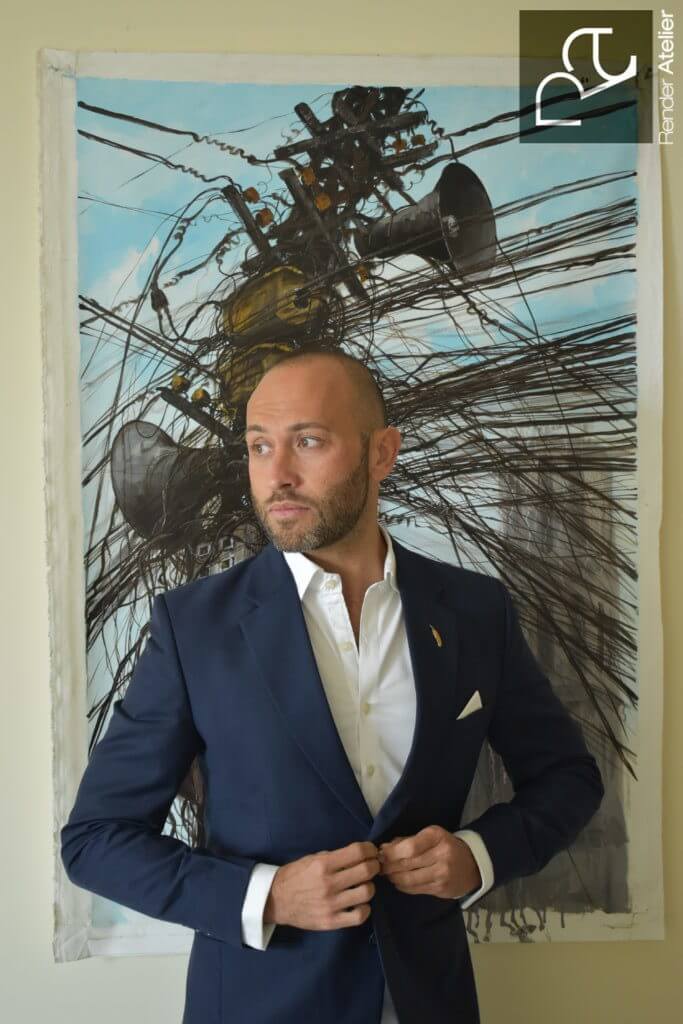 The process of 3D architectural design has become less art and more science these days with the introduction of a variety of digital tools, yet manual approaches toward the process itself cannot be ignored or overlooked. Andrea Corsini, who has spent more than a decade in improving and fine-tuning his expertise in the field of 3D architectural rendering, started his dream project – Render Atelier, with a dream of transforming 2D design objectives into 3D quasi-tangible realities.
The process of 3D architectural design has become less art and more science these days with the introduction of a variety of digital tools, yet manual approaches toward the process itself cannot be ignored or overlooked. Andrea Corsini, who has spent more than a decade in improving and fine-tuning his expertise in the field of 3D architectural rendering, started his dream project – Render Atelier, with a dream of transforming 2D design objectives into 3D quasi-tangible realities.
To date, he has worked with some of the largest real estate heavyweights, such as Shapoorji Pallonji Group. Recently, Andrea took his time out for a brief chat over a cup of coffee and spared his thoughts on the ever-evolving business and art of 3D architectural designing and rendering were. An RA media and PR team presentation:
Can you tell us a bit about how you started as a 3D architectural rendering artist, and eventually an entrepreneur?
I started my career as an interior designer and showroom manager in Italy and I had the opportunity to work for some of the biggest brands such as Dilmos, Edizioni, Vitra, Tecta and the likes. During those days, I was fortunate to get a chance to watch closely how furniture selection and material selection used to play a big role in creating some ambiance. More importantly, when I moved forward, I started learning how interior design concepts play a big role in defining the mood of any working or living space.
I can still remember how I gradually learnt the tricks of cost management and risk mitigation during the planning and designing of small and big 3D architectural design projects. I think that provided me with the impetus to imagine and conceptualize modern living spaces. Technology converts your ideas into real outputs, but creative thinking while keeping in mind the pragmatic aspects is something which I had to learn along the way. It was important for me to learn the techniques, which I picked up along the way.
Which Designers or Renderers Inspire You Most?
As a creative-minded entrepreneur, I can name many and I think it would be thoroughly unfair if I name only a few of them. In general, I like evocative and bold architectural designs – designs that use the finest aspects of dramatic lighting, staging and classic composition. I like Utopian concepts, no matter how Utopian they may seem (laughs).
But seriously, if I am asked to take a lesson from somebody or do a workshop, I would straightaway go to 3D architectural design artists like Deborah Berke and Olson Kundig. These visualizers and artists fuse well the laid-back Pacific spirit with a refined and contemporary aesthetic outlook – something we can’t really stop appreciating. Also, my previous mentors and former employers taught me a lot of things. The journey has been fantastic so far, both as a creative designer and an entrepreneur.
I have also felt inspired big time by great architectural marvels by Mead and White, Wallace Harrison, Frank Lloyd Wright and the likes.
When it comes to architectural style, do you have a preference?
That’s a good question. I love illustrating classical and contemporary details, though I find it lot more challenging to go beyond simple geometric forms. Depicting modern designs which are classy at the same time is a satisfying experience for me, and for the team which I work with.
Glass, for example, is an ever-changing material which presents different angles in different times of the day. It is by nature an invisible material, yet it is very much structural and can pull in the context. So how somebody uses glass in an architectural rendering project can make or break a design. I like experimenting with decorative elements, of course maintaining alignment with client requirements and expectations.
How long does your team take to produce a 3D architectural design?
All time available plus one hour more (laughs). No seriously, if you care about your client, and your work, you will always feel the urge to fine tune it until you are really running out of time. Clients love to suggest changes, and so do we. We take all our spare time to cerebrate architectural designs and interior designs, but at the end of the day, no work is perfect in the true sense of the term. There is always scope for improvement. We always love to incorporate client inputs, while giving our own inputs alongside. Communication is a two-way process, and so is 3D architectural design.
Since we are equipped with a lot of digital tools, the production schedule can be considerably shortened, as we can generate multiple views from a common model. You see we are a boutique full of 3D architectural renderers using all sorts of stock models such as cars, furniture and typical background buildings and all sorts of objects. Working digitally gives us the leverage, but creativity is something which prevails over everything. So if we feel that a project needs more time than we estimated, we always keep the client posted about the extension of the expected turnaround.
What role does computer aided rendering play in modern interior design environment?
Over the past few years, almost all of my work has been digital. Sometimes, we just go back to the blackboard, literally (laughs) and simply hand-draw and element and then scan it into a three-dimensional environment, but I have always preferred to mix both the traditional digital elements. We are one of the earliest adapters of 3D architectural rendering in Qatar, and we have literally been a witness of the beginning of the digital age.
From that experience, I can say that computer rendered test views and combined aspects of drawing and digital rendering have helped us in following a particular method – which we have formulated on our own. I won’t say that this is the best practice, but this is definitely the best practice which we know about.
What’s lacking in digital rendering technologies now?
I would say that the lack of spontaneity is the biggest drawback of the 3D architectural design technologies, though we ain’t really complaining about it. But if you think deeper, you would find that there’s no way you can just sketch and scribble using a digital pencil or a brush tool, or at least that won’t be as spontaneous as hand scribbling.
So if we go by our instincts, or as we say during the process, “let imaginations run wild”, that won’t produce much. As designers, we are all instinctive and I think that’s the biggest strength of any 3D architectural renderer or even an interior designer. Digital technologies still have a long way to go when it comes to ‘incorporating’ instincts.
To know more, do not hesitate to get in touch with us!

